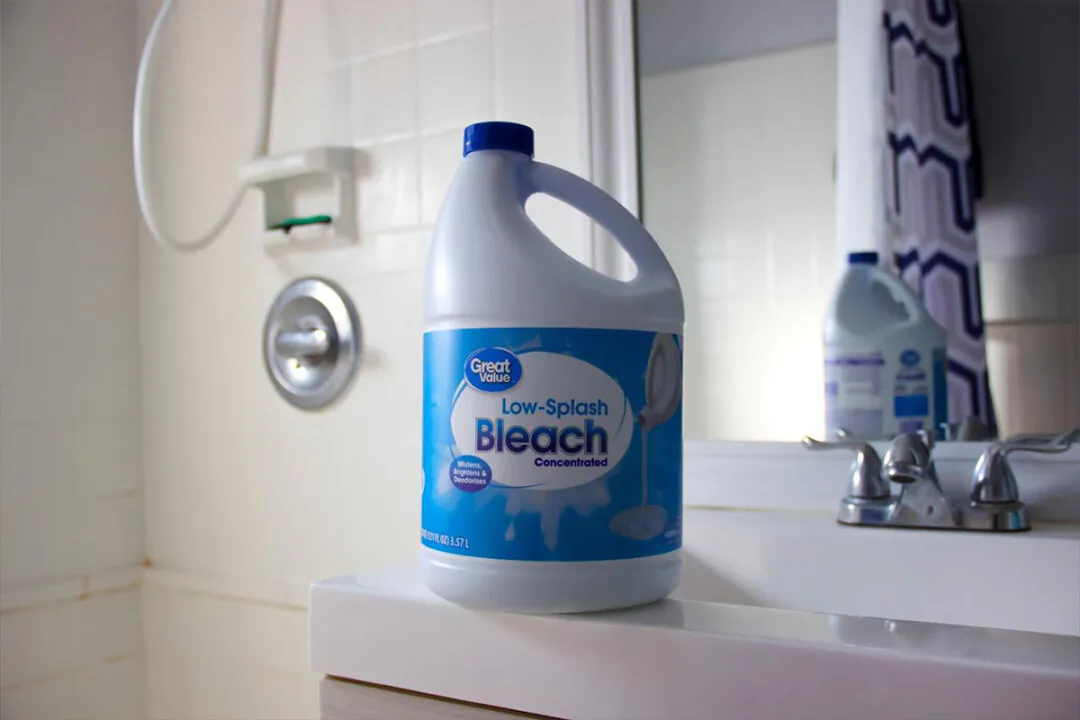While most everyone enjoys having a thermos cup for the chilly weather, thermoses can be especially hard to clean and stain easily. Bathroom glass, mirrors, and toilets may be easier to clean, but what about stubborn water and mineral stains? Some people swear by bleach, but improper use can be dangerous. In this article, housekeeping expert Chen Yingru shows us how to use different detergents to remove stubborn stains and dirt on different materials easily.
Toothpaste to Remove Tea and Coffee Stains
When cleaning thermoses and mugs, the first thing that comes to mind might be to scrub with a sponge and dishwashing liquid. Dishwashing liquid is a powerful detergent with excellent removal power, and it is highly effective when applied to wash pots and pans. However, it is inappropriate for use on non-greasy thermos cups and mugs. Plus, a scrubbing sponge will make scratches, making further inroads for dirt to adhere to.
[epoch_component type=”related_posts” position=”right” section_title=”” width=”” items=””][/epoch_component]
Ms. Chen said that toothpaste is the best detergent for cleaning such items. In addition to its decontamination ingredients, toothpaste contains some fine abrasive particles. If there isn’t much dirt, squeeze some toothpaste onto a dishwashing sponge and gently scrub thermoses and mugs. For more stubborn stains, use a melamine foam sheet. Dip it in water, squeeze most of it out, and then lightly rub it on the surface.
Ms. Chen noted that when using melamine foam, avoid applying it on oily, hot, or acidic surfaces to prevent poisonous melamine from being released. For extremely stubborn stains, you can try sodium percarbonate, an active bleaching powder rich in oxides. Mix sodium percarbonate and 104 F (40 C) warm water in a basin, soak the mugs and thermos cups there for a while, then scrub afterward.
As for glasses, if you want to keep them clean and transparent after washing, you need to add dishwashing liquid first. If they’re really dirty, consider using baking soda. Be sure to dry the glasses after washing.
Scraper to Remove Bathroom Water Stains
Why do faucets, bathroom mirrors, and backboards still have white water marks even after cleaning them? Ms. Chen said that white water marks are thin scale layers. This is because there are always minerals in water, with comparatively higher amounts of calcium and magnesium. White stains inside a kettle used for a long time also come from the same mineral residues.
The best way to prevent white marks is to use a scraper to remove the moisture after bathing. If we let the water dry by itself, the minerals will remain on the surface by the time the water is gone, which will turn into scale over time. The good thing about a scraper is that it can remove all the water traces on any surface as quickly as possible, with the minerals also taken away, leaving no chance of white scale remaining on it. The faucet is not of a shape fit for use with a scraper and can be wiped dry with a towel.
Another method is to use citric acid to remove the scale because the scale is alkaline in nature, and citric acid is acidic. They will neutralize each other, and even the most stubborn scales can be removed with this simple chemical reaction.
Use Bleach With Caution
There was a scary news report recently that an older woman was hospitalized from inhaling bleach fumes after using a large amount of bleach to clean the toilet. She spent 50 days in the hospital; doctors even had to use an extracorporeal membrane oxygenation (ECMO) machine. Ms. Chen warned that you should be careful when handling bleach. It must be diluted with water first; different applications and brands require different dilution ratios. Ms. Chen believes that even if it is diluted, it is not suitable for cleaning toilets for two reasons:
- Bleach water will destroy the microorganisms in the septic tank.
- Bleach should not be mixed with other detergents because acidic detergents plus bleach will produce toxic chlorine gas.
Ms. Chen also emphasized that when cleaning the toilet, even if you use bathroom cleaner, you must open the exhaust fan or window to let the air circulate so people aren’t inhaling the chemicals.
2 Tips for Cleaning the Toilet
Ms. Chen recommends two methods for cleaning the toilet: the facial mask method and the physical method. They are as follows:
- Facial mask method: No strong detergent is required; just let the detergent stay on the toilet surface for longer. The facial mask method involves spreading toilet paper all over the toilet’s inner surface. It is like applying a facial mask. Let the toilet paper soak in detergent and stick directly to the dirt in the toilet. After leaving it there for an hour or two, flush it away to increase its dirt removal power.
- Physical method: Use physical means, such as toilet-friendly gauze, to remove the dirt. The good thing about such a gauze is that it can gently remove dirt through friction but will not scratch. However, Ms. Chen recommends using this method sparingly. It may create some minute scratches on the surface that are not detectable by the naked eye. Over time, these will collect dirt.
Ms. Chen said there are three common mistakes made when cleaning, as follows:
- Use too much detergent: Most people think that to achieve the best effect, we must use a lot of detergent. However, its excessive use can sometimes damage the object’s surface or injure the user.
- Rinse it off too soon: People are often impatient and rinse the detergent after spraying it. In this case, the detergent has not done its work to properly break down the dirt, resulting in poor cleaning results.
- Wrong ratios: Most detergents need to be diluted. It will be more effective and safer if used according to the instructions.
If people who use natural detergents feel they’re not getting great results, it may be due to the following four wrong behaviors:
- Using the wrong detergent: If you use baking soda to clean the toilet, it is bound to be in vain because baking soda is only suitable for removing oils. In this case, citric acid is the best for cleaning water scales, urine scales, and soap scum that adhere to the toilet surface.
- Mixing acid-base for cleaning: Some people think baking soda is marvelous and citric acid is equally strong, so they put them together. However, as baking soda is alkaline and citric acid is acidic, they neutralize each other when mixed, resulting in poor cleaning effects.
- Not suitable for stubborn stains: Natural detergents are milder and thus more suitable for light and moderate dirt. There seems to be no choice but commercially available detergents for really stubborn stains.
- Wrong application steps: Some detergents must be diluted before use, soaked in warm water first, or left to soak on objects before they become effective.




